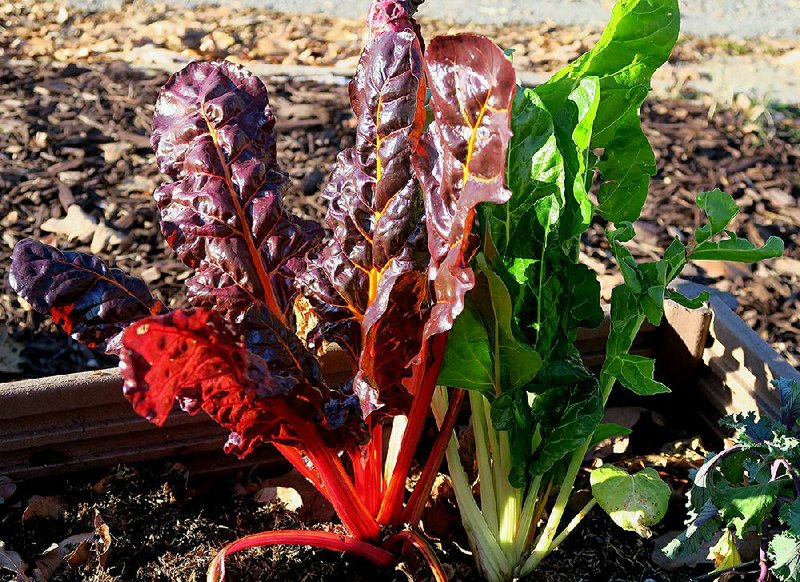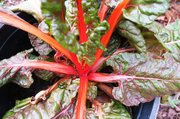NOVEMBER
We have had a taste of cool weather statewide, and some areas have had a frost. Now is the transition time from active growth to dormancy. November also marks the beginning of the dormant season, which runs through February.
• Cleanup in the garden will go on, but we typically have a lot of plant material we can add to a compost pile in November. How happy and healthy your garden is now can determine how well it starts growing next spring, so do your cleanup chores.
• November is the ideal time to plant a new tree. Soils still have some residual heat; we often get ample rainfall, and while the trees are dormant, they can focus on putting out roots, before they have to worry about supporting leaves and new growth. Choose trees based on mature size. If you are looking for a particular fall foliage color, choosing it while you can see those leaves is smart. Be sure to look up when planting a tree -- avoid planting under power lines or your tree won't be able to reach its full potential.
• Cut back perennials as they finish for the year, pull out the spent summer annuals and rake leaves.
If you have hardy trees, shrubs or perennials that need to be moved from one part of your yard to another, now is a great time to move them. Be careful if digging plants when the temperatures are really low so that you don't expose the roots to very cold air or to drying winds for very long. Have the new hole ready before moving the plant.
• Plants that sometimes struggle in a cold winter -- such as hydrangeas, azaleas and figs -- should be moved at the end of the dormant season to allow the bulk of winter weather to pass first.
• Many gardeners had summer annuals that were still thriving last month. If you haven't planted your winter annuals yet, do so soon. From pansies and violas to dianthus, flowering kale or cabbage, there are a lot of ways to add seasonal color. You have through mid-December to plant seasonal color, but giving the plants time to get their root systems established before really cold weather hits will help them handle cold weather better.
• November is also a great time to plant spring flowering bulbs. Tulips, daffodils, crocus and hyacinths are planted as dry bulbs. To grow and reach their full potential, they need chilling hours, which they get naturally during the winter. Plant your bulbs in a hole two to three times the size of the bulb. You don't have to fertilize at planting, since the bulbs contain everything (flowers, foliage and stems) when you buy them. They set their blooms for the following season in the spring after they finish blooming. Once they go dormant, they are all set to go the next year.
• Many home gardeners are growing vegetables year-round outdoors. With the availability of season extenders, or just some ingenuity of creating protection for the plants, vegetables can take even the coldest of temperatures. Most cool season vegetables can tolerate temperatures to about 28 degrees without protection but will need to be covered if temperatures drop lower, or before a clear, still night with a freeze in the forecast. Overturned boxes, flower pots or small high tunnels can add the protection you need. Many of these cool-season vegetables actually taste sweeter when grown in the cooler months. Some vegetable transplants are still available, so plant soon, keep them watered and fertilized, and you can harvest vegetables all winter.
SWISS CHARD
While Swiss chard is an excellent vegetable, it also makes a very showy winter ornamental. This plant is a beautiful edible ornamental.
Swiss chard (Beta vulgaris Beta vulgaris var. cicla) is a kissing cousin of the common beet. We grow chard in vegetable gardens for leaf and stem production, but the colorful stem, or petiole, makes it shine in ornamental beds.
Swiss chard is easy to grow and will last almost year-round in Arkansas, but it is particularly showy in the fall, winter and early spring garden because of its colorful stalks and large, glossy leaves. The leaf stalk can be a variety of colors, including red, white, yellow or orange. "Candy cane" is a variety with red-and-white-striped petioles.
Although Swiss chard prefers cool weather, it does not bolt (or go to seed) as quickly as many other cool-season vegetables.
The plant produces a small, bulbous root, and if it is frozen back or cut for harvest, it can produce another set of leaves from the root system, which increases your harvest. It can suffer some top damage if temperatures get below 26 degrees. A light covering will protect it, and it should bounce back.
Swiss chard can be planted from seeds or transplants, but if you want it in your garden now, transplants are required.
Janet B. Carson is a horticulture specialist for the University of Arkansas Cooperative Extension Service.
HomeStyle on 11/03/2018

